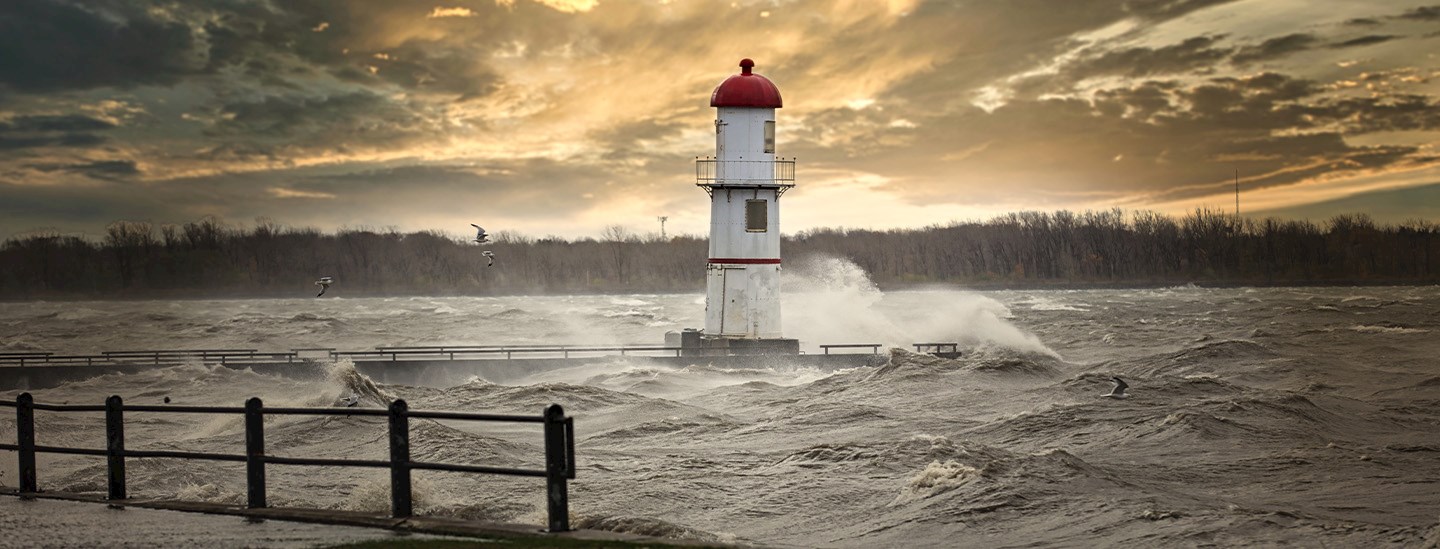Hurricanes and related storms
Hurricane season is from June through November, when the Atlantic Ocean's waters are warm enough to produce a tropical cyclone, a broad term that includes hurricanes, tropical depressions and tropical storms. The three types of cyclones differ in their sustained wind speed — the one-minute average wind speed measured at 10 metres above the surface. All three have winds that move in a circle around a calm center, or eye. In the Northern Hemisphere, the winds circle counterclockwise; in the Southern Hemisphere, they move clockwise.
- A hurricane is an intense tropical weather system of strong thunderstorms with maximum sustained winds of at least 118.5 kph (64 knots).
- A tropical storm is an organized system of strong thunderstorms with maximum sustained winds of 63 kph to 117 kph (34 to 63 knots).
- A tropical depression is an organized system of clouds and thunderstorms with maximum sustained winds of 61 kph (33 knots) or less.
- A storm surge is a dome of water pushed onshore by high winds. Storm surges can reach 8 metres high and be from 80 km to 1,600 km wide. A storm surge is the greatest threat to life and property along the immediate coast.
- A storm tide is a combination of a storm surge and the normal tide. For example, a 5-metre storm surge combined with a 1-metre normal high tide creates a 6-metre storm tide.


